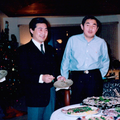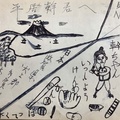Kazuko was thirteen years old when her family was exiled to Japan. Her parents made the difficult choice of exile to Japan because their kids were still small and her father felt a strong responsibility to take care of his adoptive mother who was still alive and living in Onomichi. His adoptive parents had moved back to Onomichi before the war, had bought a house and ran a small restaurant there. His adoptive father had died during the war, and his adoptive mother was managing the restaurant by herself. Kazuko’s father also thought there was no use in staying in Canada with small kids. She says, “He had lost everything in Canada, so what could he do there?”
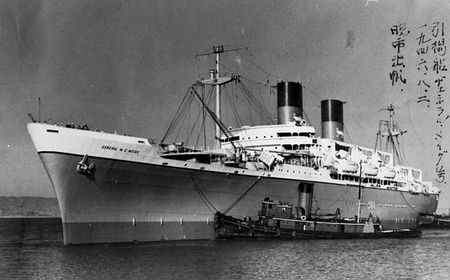
The family went to Japan on the General Meigs. Kazuko doesn’t remember much about the journey. They landed at Yokosuka which, she remembers, was fenced around so they couldn’t get out. She can’t remember exactly what food they received there, but does recall that they were not fed properly, and had to boil and eat dandelion greens as a vegetable.
They went to Onomichi by train. The conditions on the train were terrible. Kazuko recalls that it was extremely crowded with soldiers and expats who were also returning from the colonies to Japan. There were no open seats, and the soldiers would not give up their seats for the civilian passengers. Soldiers just jumped on the train and showed no regard for the children like Kazuko. It was difficult to even move. Kazuko jokes that her future husband could have been one of those rude soldiers as he was nine years older than her and was returning from China about this same time.
Kazuko recalls the strong anger they were feeling about being deported to Japan just like foreigners even though they had been born in Canada. She says, “We were all very upset at Canada, and we kept saying that we were Canadian, but that didn’t matter to the government officials because our parents were not Canadian-born.” During the journey, Kazuko’s brother kept crying all the time and refusing the food, and saying he wanted to return to Canada. This continued for some time even after they arrived in Onomichi.
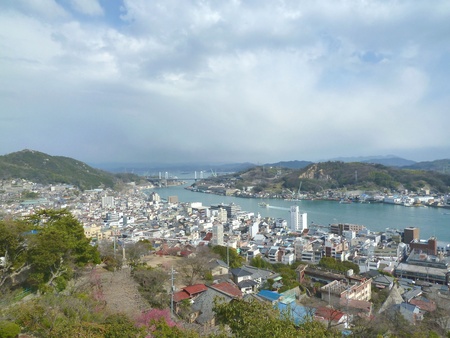
Because the Japanese Canadian exiles could not speak or even clearly understand the local dialect of Onomichi, they were excluded and called enemies by many of the people there. Perhaps because they had been better nourished (in spite of living in internment camps) than the local people who were practically starving, they were even told that, since their faces didn’t look Japanese, they could not possibly be real Japanese.
Kazuko’s younger brother started school in grade one, and her younger sister in grade two. Kazuko was supposed to go to high school, but couldn’t understand what the teachers were saying. She was moved from high school back to grade 5, but still could not understand. There was also a severe shortage of textbooks. She quit school after about a year and a half. Her older sister went to work for the American occupation forces at Kure, and she recommended that Kazuko do the same.
About that time they learned that a family in Montreal, Canada, wanted to adopt both Kazuko and her older sister. Her parents approved of the older sister going to Montreal, but wanted Kazuko to stay and help them in Japan. Consequently, the older sister went to Montreal after only a short time in Japan, while Kazuko continued to live in Onomichi with her parents. The older sister eventually broke off contact with the family and they never met or heard from her again although Kazuko once did hear some information about her from a mutual acquaintance.
Soon Kazuko briefly did go to work for the American forces in Kure. Perhaps because she was only 15 years old, her mother didn’t like it, so she quit and returned to Onomichi after about a year. She didn’t know what to do next. Fortunately, her younger cousins all wanted to learn English from her, so she started to go regularly by bus to their home to teach them. They paid her for it, and also provided her dinner on the days she taught. She continued teaching them English for about three hours per day, two or three days per week, for three or four years, until she got married at age 19. This teaching work helped her maintain her own English skill. Kazuko was later told by her uncle that her good teaching enabled one of her younger cousins get a good job in Tokyo due to his above average English ability.
Kazuko’s parents were also eventually able to find work after they went back to Japan. Since her mother had learned to sew western clothes while in Canada, she was able to work at home as a seamstress, making western style clothes which were becoming popular in Japan then. She was very outgoing and liked to both knit and sew clothes for those around her. Kazuko’s father worked delivering ice cube boxes to various restaurants. Kazuko thinks that he never wanted to return to Canada because of his limited English, and also because he had been dispossessed of all his property (including his fishing boat) in Canada—so he had nothing in Canada to go back to.
Sadly, they later divorced. Before the uprooting and incarceration in the internment camp, they had been a prosperous family and even a kind of social and economic hub for other families in the community. Kazuko believes the long separation and trauma her parents endured during the incarceration of Japanese Canadians was a major reason for the eventual breakdown of their marriage. She notes that after the incarceration and return to Japan, their relationship was never the same, and they no longer got along. Her father eventually remarried with a lady from Onomichi and spent the rest of his life there. After the divorce, Kazuko and her siblings, except for her older sister, all gravitated to their mother and even changed their family name from Fukuhara to their mother’s maiden name, Momotani.
At age 19 Kazuko married Takeshi Makihara, a former soldier who was nine years older than her. He had worked as a blueprint designer for the Japanese navy and was based in Taiwan during the war. After coming back to Onomichi, he began working for a company and apparently saw Kazuko several times as he passed her house on his way to and from work. Eventually they became acquainted and decided to marry. She says, “He was a typical ishii-atama (stubborn) young Japanese man. I later told him, ‘If I were in my 20s and smarter, I would never have married you.’” They had their first child, a boy, in 1952.
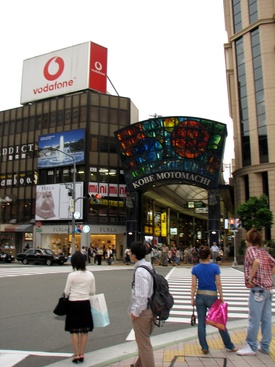
They moved to Kobe in 1954 because Takeshi’s friend and brother were already living there and had invited them to join them since there were more jobs in Kobe at that time. Takeshi worked for a pearl company, and Kazuko worked in a big luggage store in Kobe’s famous Motomachi shopping street. A lot of Americans used to visit Kobe in those days and Kazuko’s English skill really helped increase the store’s business. She continued this job until she returned to Canada in 1958.
To be continued...
* This series is an abridged version of a paper titled, “A Japanese Canadian Teenage Exile: The Life History of Kazuko Makihara”, first published in The Journal of the Institute for Language and Culture (Konan University), March 15, 2019, pp. 3-20.
© 2019 Stanley Kirk




